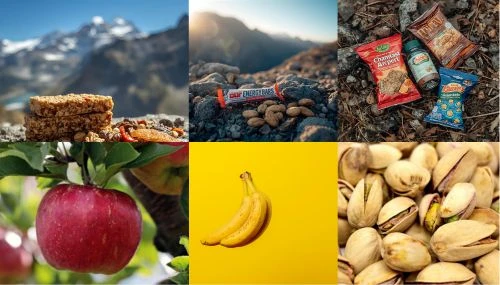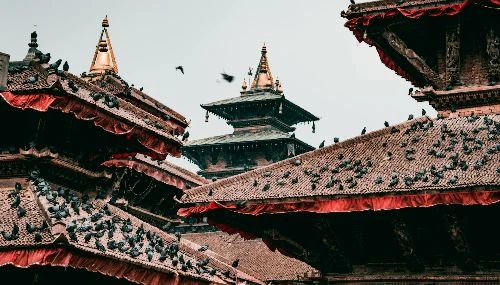Nepal is popular all around the world for its trekking destinations. We feature two notable destinations: the Everest Base Camp and the Annapurna Circuit. These have been favored by enthusiastic seeking lifetime exciting experiences.
However, the Annapurna region has encountered challenges due to the construction of roads along its renowned trails. As a result, alternative routes have emerged.
And the Manaslu Circuit is the best of them. Mt. Manaslu is the eighth-highest peak in the world. This offers breathtaking landscapes and comfortable tea houses with a wholesome experience. Tourists interested in exploring the remote taste of Nepal can surely choose this trail.
Hence both of them are the popular destinations in Nepal in the current day. Travelers have started having dilemmas regarding the choice between the Manaslu and Annapurna circuits.
Keep reading to learn more about the similarities and differences between these two.
Major Attractions
People all around the world visit the Manaslu and Annapurna regions for the attractions they offer. Here is a list of attractions that people enjoy.
Manaslu
- Amazing sceneries during the drive from Kathmandu to Soti Khola.
- Crossing the daring Larkya La Pass, standing tall at 5,106 meters.
- Awesome experience through the Budhi Gandaki River.
- Captivate the biodiversity and landscape.
- The mesmerizing view of peaks, such as Manaslu, Lamjung Himal, Annapurna II
- Explore the flora and fauna of the region.
- Enjoy the vibrant culture of local Hindus and Buddhist culture.
- Chance to spot exotic species like a snow leopard.
Annapurna
- Explore the beauty of Manang and Mustang.
- Visit Muktinath Temple, a pilgrimage site.
- Experience the natural hot spring at Tatopani.
- Enjoy the amazing view from the Poon Hill viewpoint.
- Adventure into the Thorong La Pass, which stands at a height of 5,416 meters.
- Witness the charm of yak pastures in the highest settlement areas.
- Breathtaking views of peaks like Annapurna, Thorong Peak, Chulu West and East, Dhaulagiri, Lamjung Himal, Annapurna II and IV, and more.
- Take a visit to the largest monastery in Manang, the Barge Monastery.
Trail
Before heading to any destination, calculating its duration is very important to plan everything. Here's an overview of the duration of these two.
Manaslu

Manaslu starts from Soti Khola to Dharapani and is a moderately challenging trek. The exact duration will rely on your walking experience, physical fitness, speed, and days of acclimatization of your plan.
It typically takes from 10 to 14 days for the trip. You have to walk for 6 -7 hours on average in a day besides the acclimatization days. Some sections of the trail, like Machhakhola to Jagat, Jagat to Deng, and Deng to Namrung, can be long and exhausting.
If you are ready for more adventure, you can extend your trip by adding a week-long hike to Tusm Valley. The trail splits from the Nyak Phedi Suspension Bridge. So as per your preference, you can either take a two-week or three-week journey.
Annapurna

The journey of the Annapurna trek starts from Besisahar to Nayapul. The exact duration of this journey also depends on your walking experience, physical fitness, speed, and days of acclimatization.
Unlike Mansalu, Annapurna trails offer flexibility because of the dirt motor road.
This adventurous drive allows you to skip several days of walking both before and after crossing the Throngla Pass.
It takes around 15-18 days on average. You have to walk for 6-7 hours every day on average besides the acclimatization day. Experts recommend spending at least 1 day in Manang for acclimatization.
Lodging and Fooding
Food and accommodation conditions can make or break your travel experience. Finding a proper one may be a headache while traveling. So to explore your lodging and food options keep reading.
Manaslu
The lodges are similar throughout the Manaslu Trail. The villagers offer you very basic lodges without many amenities. There are also a few large modern guest houses with hot showers, electricity, and even the wifi.
Besides, in Dharamsala, the last overnight place before Larkya La Pass, all the rooms are huge, and large beds are fitted. The stay is very warm than other places. It is a surprisingly amazing experience. They also provide tented accommodation for you to spend a short night there.
The price is around USD 30-35 per person per day on average for food and lodging. An additional charge is taken for extra drinks, snacks, and desserts. And some extra for soft drinks, snacks, desserts, and booze.
Annapurna
Compared to Manaslu, the Annapurna region's lodging and food price is comparatively lower. The amazing part is that even though prices are low the accommodation is even more comfortable and luxurious.
Hot showers, Wi-Fi, western toilets, soft beds, and extensive menus are all available through the Annapurna circuit. They charge USD 25-30 per person every day and extra cost for extra interest like snacks, and booze as usual.
Permits
Most people do not know the number of permits and costs that may add up to the trip.
However, you don't need to worry about it because reputable agencies already take care of permits for your Manaslu Trek.
Let's break down the actual cost of these permits for both Manaslu and Annapurna.
Manaslu
You'll need three permits: MCAP, ACAP, and MRAP.
The cost of the Manaslu Conservation Area Project permit (MCAP) is $30 US throughout the year. Meanwhile, the Manaslu Restricted Area Project permit (MRAP) costs $100 US per week in autumn (Sep - Nov) and $75 US per week in other seasons.
For stays longer than a week, you’re required to pay an additional $15 US per day in autumn and $10 per day in other seasons.
Meanwhile, the Annapurna Conservation Area Permit (ACAP) costs $30 US and is valid for any number of days in the Annapurna region.
Annapurna
To take the permits required for Annapurna is quite a straightforward process. First thing, you will need only two permits.
The first permit is the standard TIMS Card, which costs a reasonable USD 20 or 10. This card is mandatory unless you have any restricted area permits.
The second permit required is the Annapurna Conservation Area Permit, which costs USD 30.
If you consider doing the trek independently without a guide, these permits will cost you around USD 50. However, if you consider taking a trip from an agency, the cost will be around USD 40.
The permits can be taken from both Kathmandu and Pokhara. Besides that, you can also take them at the checkpoints along the way, but the price will be double.
People and Culture
Both treks allow you to understand the rural Nepali culture and lifestyle. Locals in Nepal are friendly and welcoming, delighted to offer you their best cuisines and hospitality.
Manaslu
Manaslu settlement is filled with the settlements of the Chettri, Brahmin, and Magar communities. As you reach the upper region, you will mostly encounter three main ethnic groups: Tibeto-Burmans, Indo-Aryans from the south, and Mongoloids from the north.
Besides if you plan to hike to the Tsum Valley, you will also come across settlements of the Nubri and Tsum people. This diversity of people inside the Manaslu region will amaze you with different cultures and languages.
The languages spoken in this area vary from Nepali and other Sino-Tibetan languages. Languages such as Nepali, Nepal Bhasa, Nubri, and Tsum are spoken by the locals in this region.
Annapurna
Annapurna settlement is filled with the settlements of the two prominent ethnic groups, namely Gurung and Magar. There is also a significant population of Thakali, while the Loba community mainly dominates the north.
Brahmin, Chhetri, and other occupational castes residing in the area are comparatively less. All the groups of this region have their own distinct culture, contributing to the rich diversity.
Most of the population in this region follows a unique blend of Hindu, Buddhist, and pre-Buddhist practices. You can surely explore people speaking different languages throughout your journey.
Trek Summary Table
Features | Manaslu Circuit | Annapurna Circuit |
Start Point | Soti Khola | Beshishar |
End Point | Dharapani | Nayapul |
Number of days | 10 - 14 days | 15-18 days |
Walking Hour Per Day (avg) | 6 - 7 hours | 7 hours |
Permits | ACAP, MCAP, and MRAP | ACAP and TIMS |
Independent Trek | Allowed | Not Allowed |
Communication | CDMA and V Sat phone | NTC, Ncell, and landline phone |
Max Elevation | 5167 m | 5416m |
Access to Tibet Border | Yes | No |
Ethnic Tribe | Chettri, Brahmin, Magar, Lama, Thakuri, Bhote | Gurung, Magar, Ghale and Thakali |
Wrapping Up
All in all, both the Manaslu and the Annapurna regions offer travelers the ultimate experience of natural beauty, landscapes, glaciers, and many more.
The Manaslu trek offers a chance to explore the remote side of Nepal. On the other hand, the Annapurna trek offers a chance to explore Manang and Mustang, visit pilgrimage sites, and the stunning views from Poon Hill.
The former typically takes 10-14 days, while the latter takes around 15-18 days. The lodging and food options are basic but affordable in Manaslu, while Annapurna offers more comfortable and luxurious accommodations.
Both are amazing trips and choosing one depends on the trekker and their preferences.


.webp)

